How is “Comprehensive Art” Possible? – From “Gesamtkunstwerk” to “Intermedia” ( lecture 1 )
Release time:2022-11-14

Comprehensive Painting Series Lectures
How is “Comprehensive Art” Possible?
——
From “Gesamtkunstwerk” to “Intermedia”
Published on Apr. 18th, 2021
Keynote Speaker
Zheng Ye, Ph.D. in Art History of Freie Universität Berlin, Art History scholar
Hostess
Chen Yan, Professor and Dean, Department of Comprehensive Painting
Time
October 16th, 2020, 9:30 am
Location
China Academy of Art, Nanshan Campus, Room 3-311
Organizer
Department of Comprehensive Painting, School of Painting, CAA
Research Center of Comprehensive Painting
1“Gesamtkunstwerk”
In the late 19th century, the term “Gesamtkunstwerk”, created by Richard Wagner, began to be seen as an idealism and goal for artistic development in the future. There are three main definitions of this ideology. First, Gesamtkunstwerk describes artworks that use multiple or all available artistic forms in the creating process. Second, such ideology was designated to encourage people to break the interpersonal and interdisciplinary estrangement, both of which caused by social class and labor division. Thereout, a novel futuristic human culture will be born. Last but not least, Wagner believed that Gesamtkunstwerk should be fully ordinated by the artist, working together with other artistic participants as a whole. Furthermore, “Gesamtkunstwerk” serves the purpose of “totality” – the completeness of the human spirit, which specifically referred to the transformation from Christianity to ethos.
Case Study 1: Kölner Dom
The term “Gesamtkunstwerk” would easily remind us of the medieval cathedrals. They are perfect examples of combining all art categories to serve a sole purpose -to show the spirituality and transcendentality of Christian faith.

Case Study 2: Wagner’s Dramas
Wagner’s “Gesamtkunstwerk” theatrical play Der Ring Des Nibelungen was a story of the medieval German mythology. Picture shown is one of the 14 mise-en-scène paintings by German Romanticism artist Ludwig von Hofmann, specially made for the show’s premiere in 1876 (black and white photography).

Scene 1 of Das Rheingold from the first Bayreuth Festival production of the Bühnenfestspiel in 1876 .
The concept “Gesamtkunstwerk” is a reminder to us that artists would resorts to various sensations to create artworks. Such a process also involves miscellaneous art forms (music, theatrical play, painting, sculpture, film and performance etc.) Our lecture selected abundant cases of such fusion of art forms in western art history; they also helped forming many artistic styles and genres. Their “Gesamtkunstwerk” goals differ as well; all were profoundly connected to the social background, political idealism and cultural ideology at the moment.
Case Study 3: Art Nouveau Era architectures, such as Antonio Gaudi’s Sagrada Família and Rudolf Steiner’s Goetheanum
The influence of Gesamtkunstwerk on Art Nouveau was mainly on architecture. When architecture become the king of all arts, architectures must consider the design as a whole; the Gesamtkunstwerk of architecture includes both the interior and exterior elements, such as interior decoration, murals, furniture display and lighting.
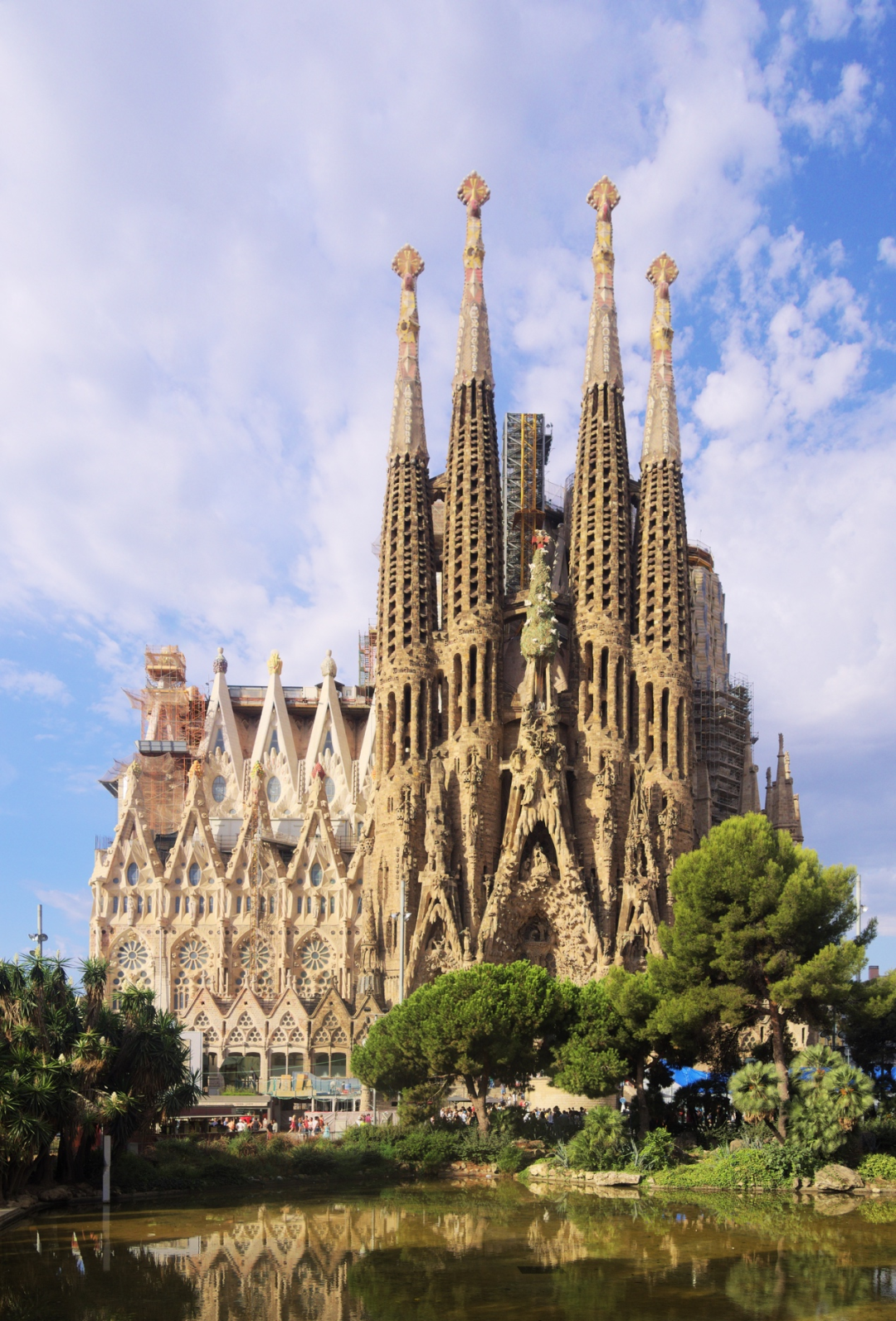
Antonio Gaudi’s Sagrada Família
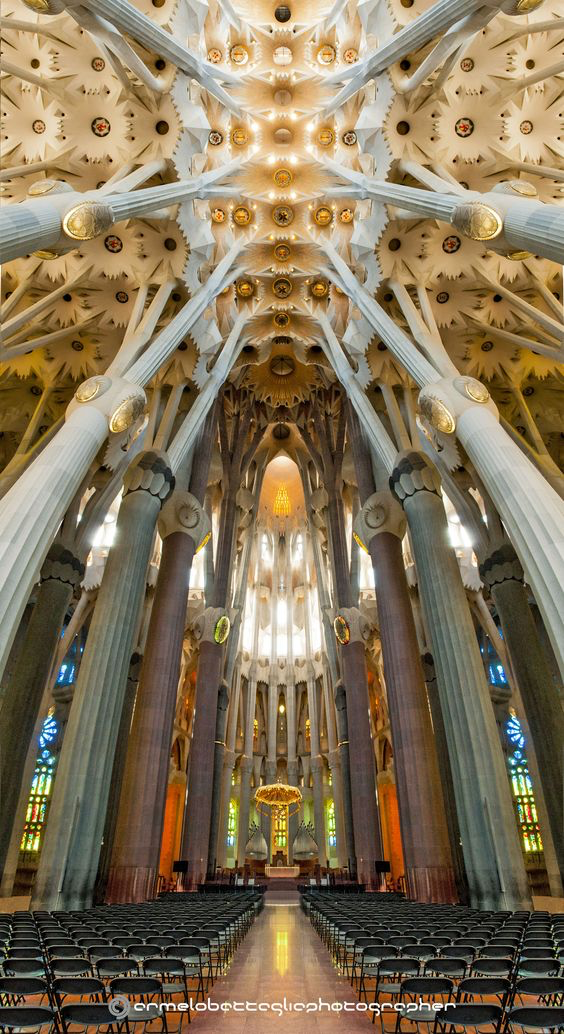
Antonio Gaudi’s Sagrada Família
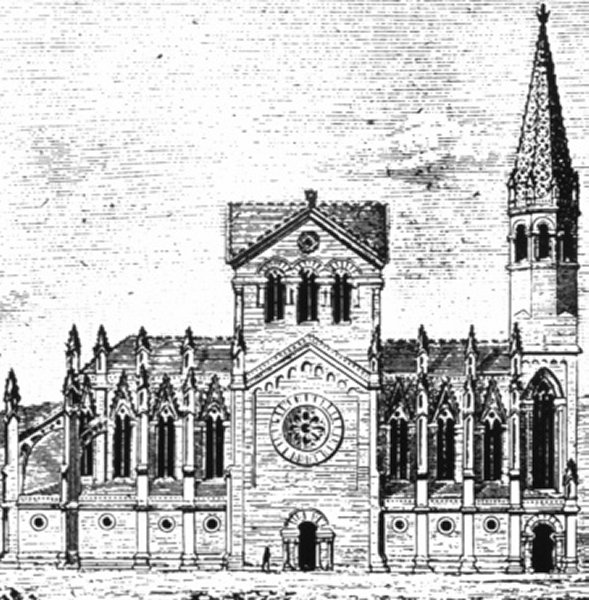
Sagrada Família in Gothic Revival style, 1882
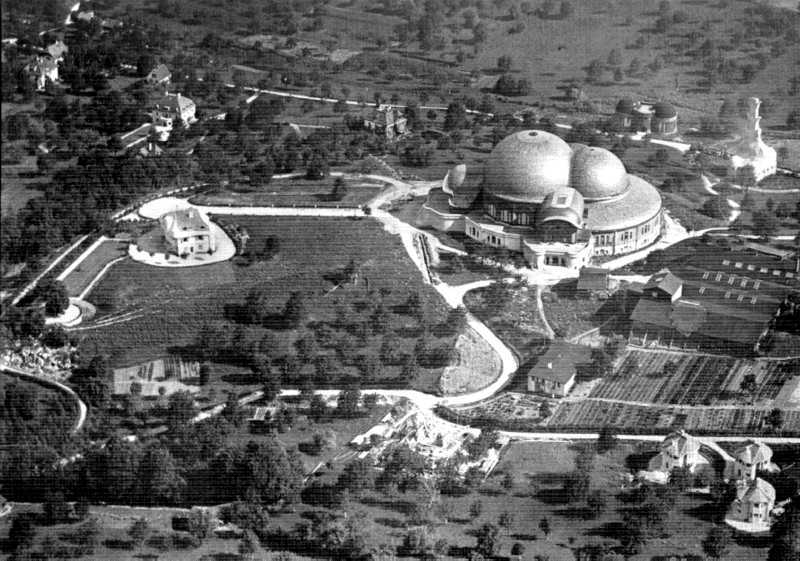
Rudolf Steiner’s Goetheanum, 1914
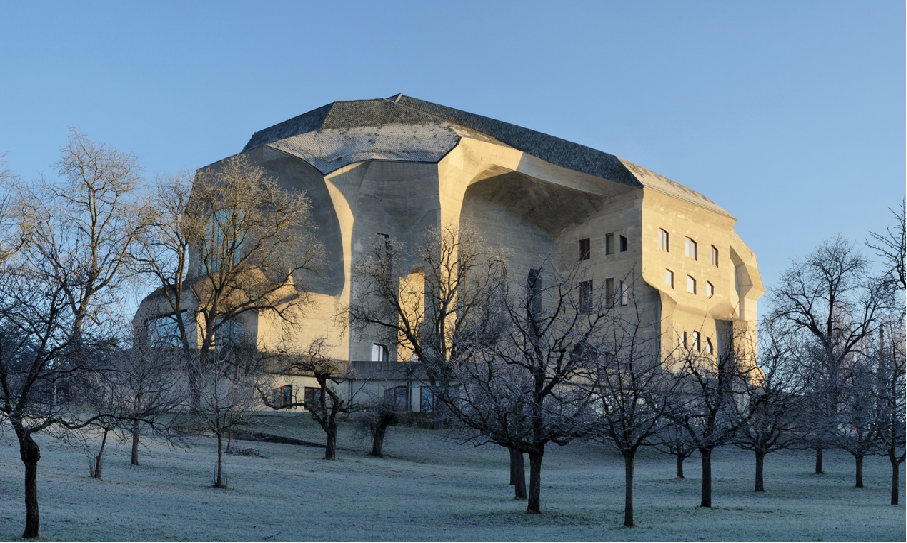
Rudolf Steiner’s Goetheanum
Refurbished 1925-28
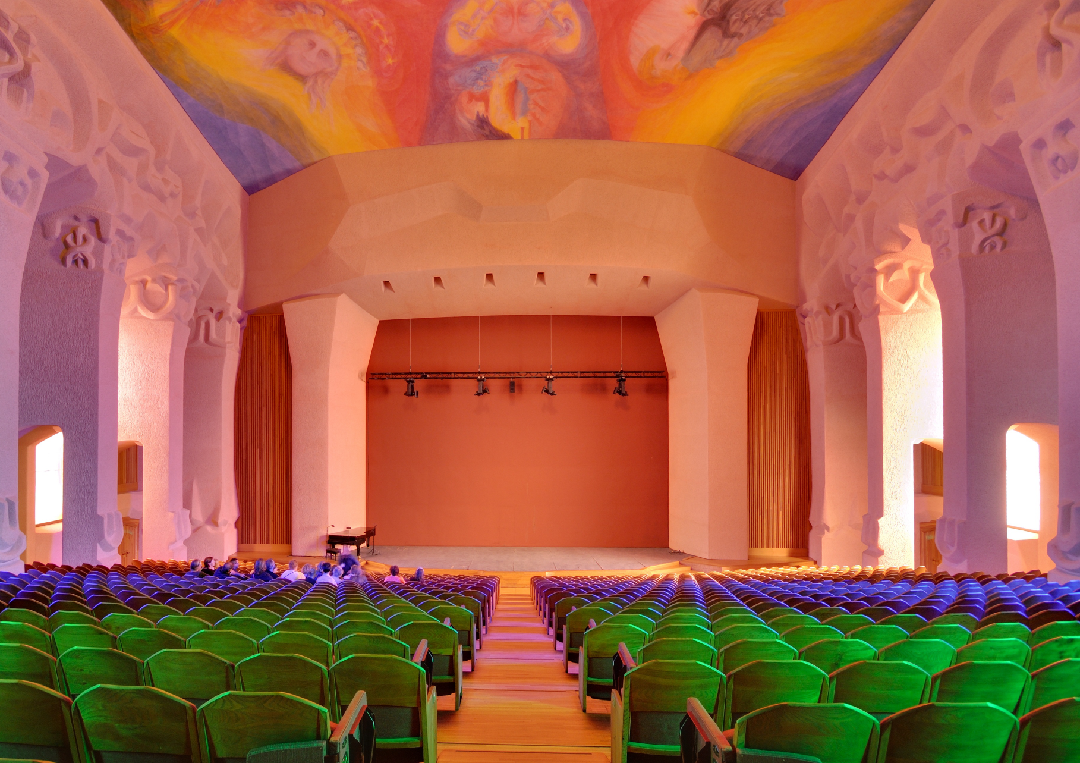
Rudolf Steiner’s Goetheanum, interior
Case Study 4: Architecture motifs in expressionism paintings, Lyonel Feininger’s Cathedral of Socialism designed for the Bauhaus Manifesto, Oskar Schlemmer’s Das Triadische Ballett, and Wassily Kandinsky’s abstract paintings
Created in the early 20th centry, Kandinsky’s abstract paintings were often named after musical compositions; that very word can also refer to the structure and component of a picture. Kandinsky insisted that shape, color and sound are interconnected parts of Gesamtkunstwerk.

Lyonel Feininger’s Der Dom in Halle, watercolor, 1931
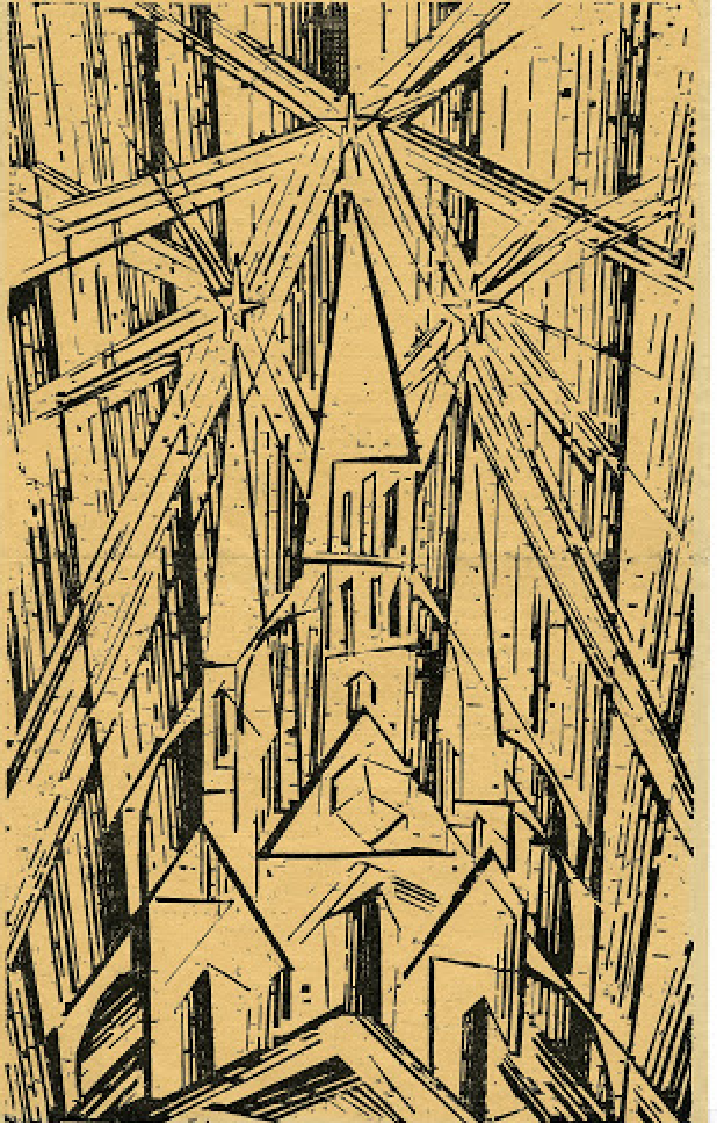
In the Bauhaus Manifesto
Lyonel Feininger’s Cathedral of Socialism

Oskar Schlemmer’s Das Triadische Ballett
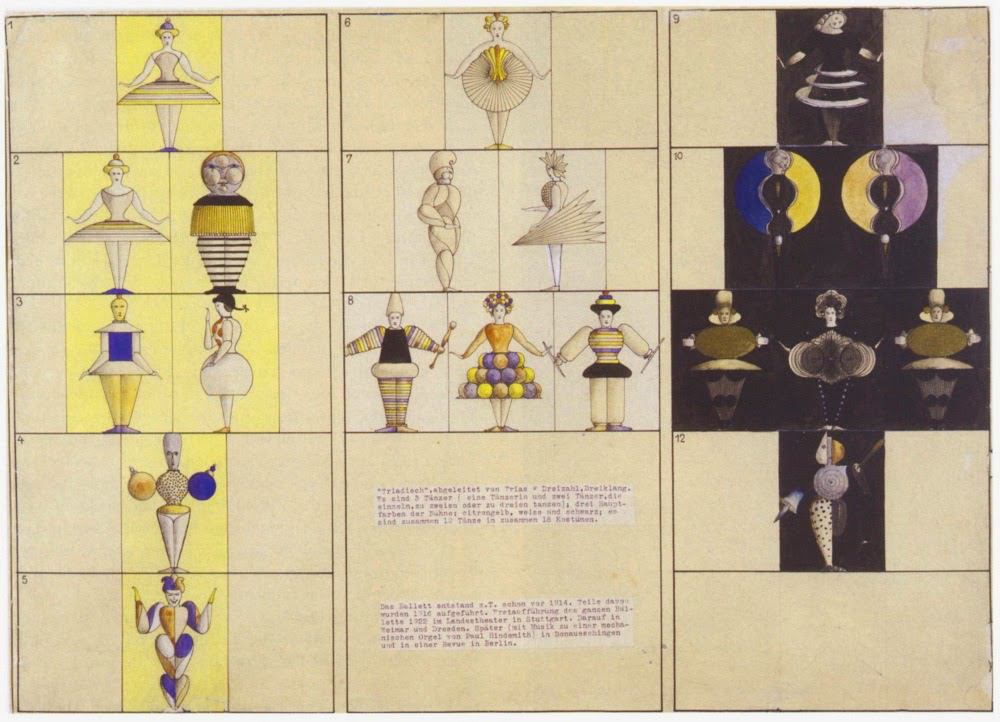
Costume designs from Das Triadische Ballett
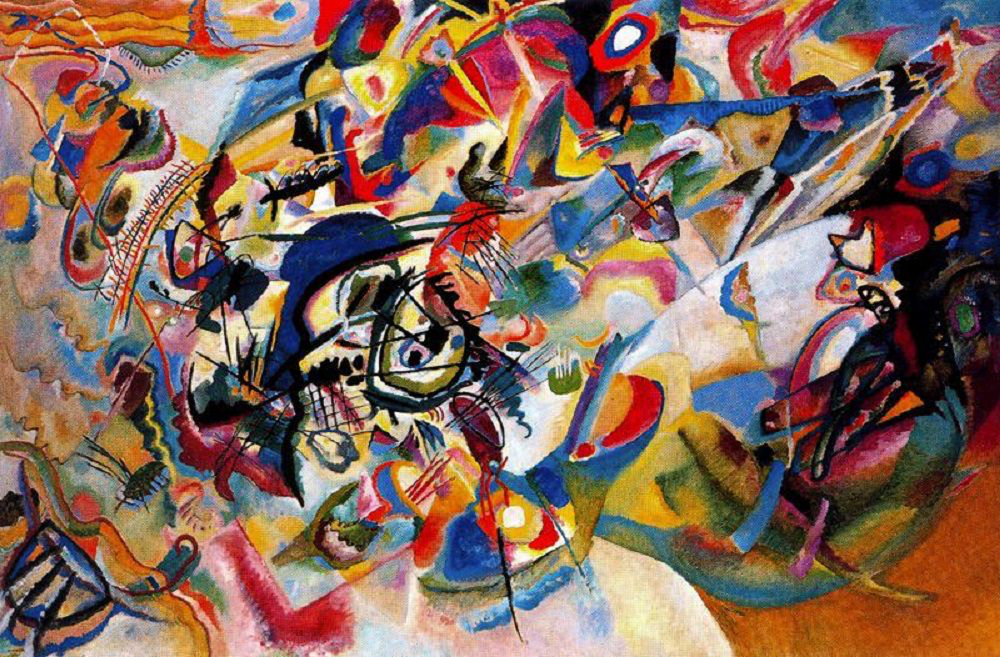
Kandinsky’s Composition 7, 1913
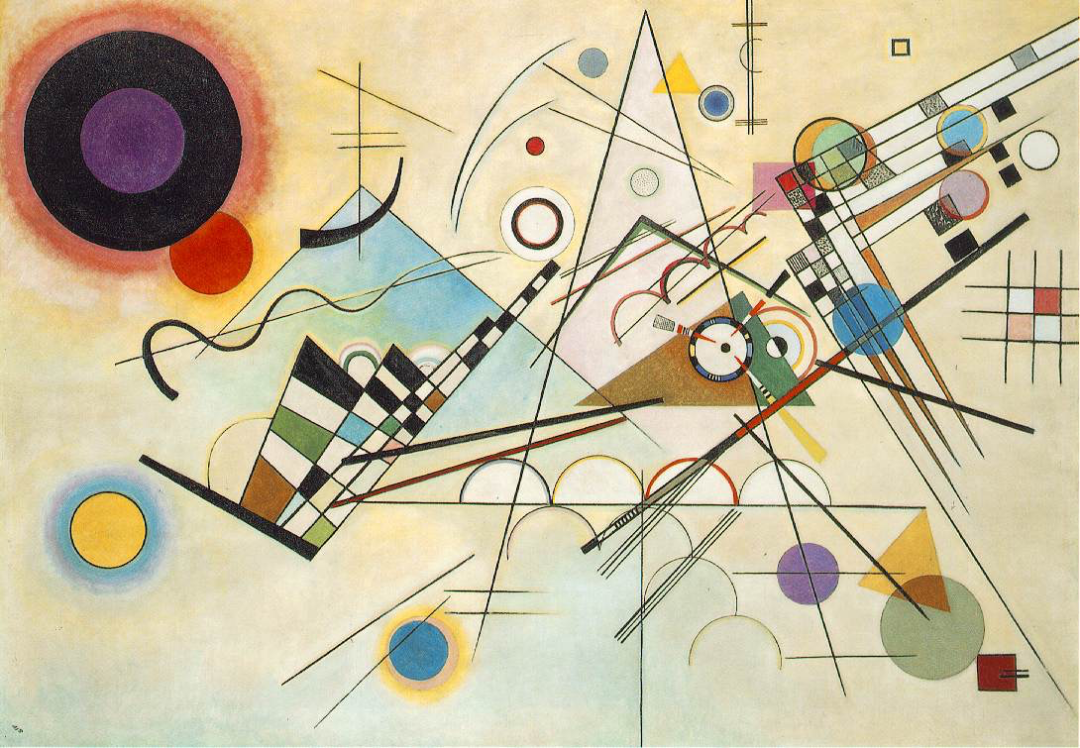
Kandinsky’s Composition 8, 1923
Case Study 5: French Cubism’s collage, assembly and Kurt Schwitters’s Merz
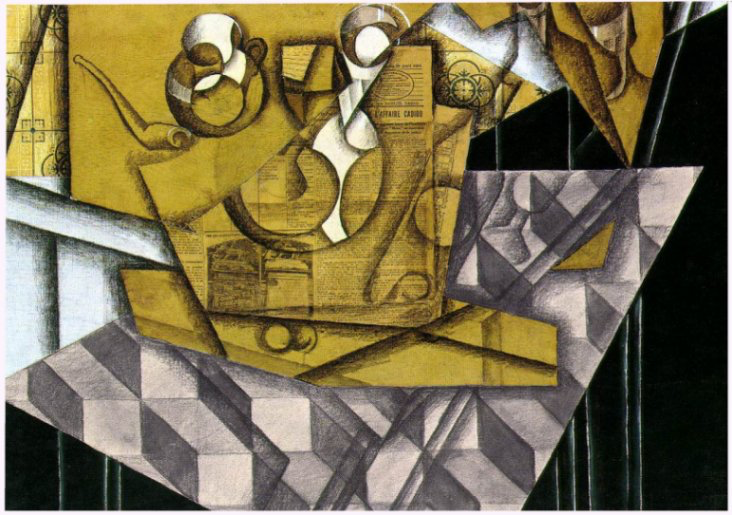
French Cubism’s collage. Picture shown is Juan Gris’ Tea Cups, paper, charcoal and oil on canvas, 1914
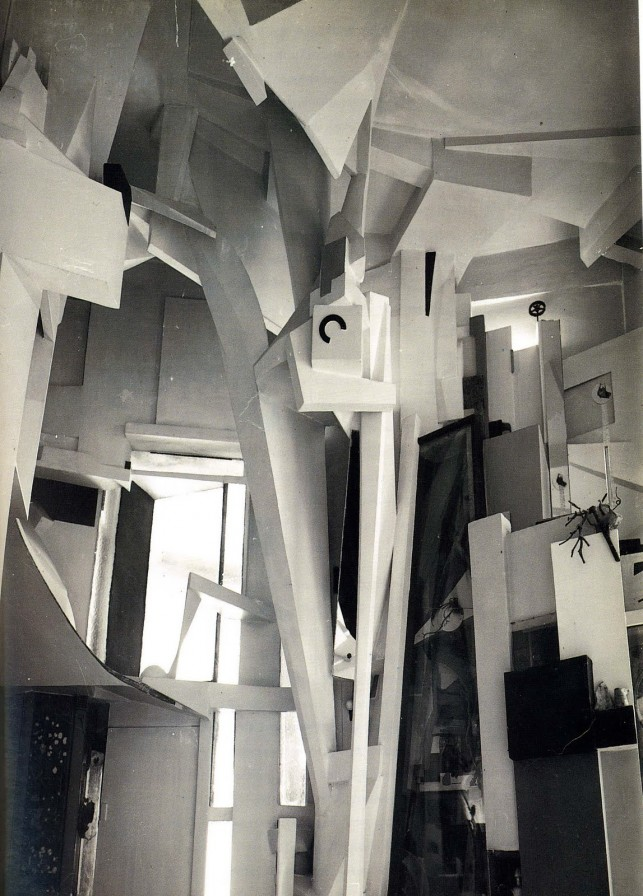
Kurt Schwitters’s Merz: applying cubism collage and assembly in living space creation. Picture shown is a replica photo of Merzbau.

Kurt Schwitters’s Merz painting Picture with Light Center, newspaper, pencil, watercolow and oil paint, 1919
Case Study 6: Jackson Pollock’s Action Painting
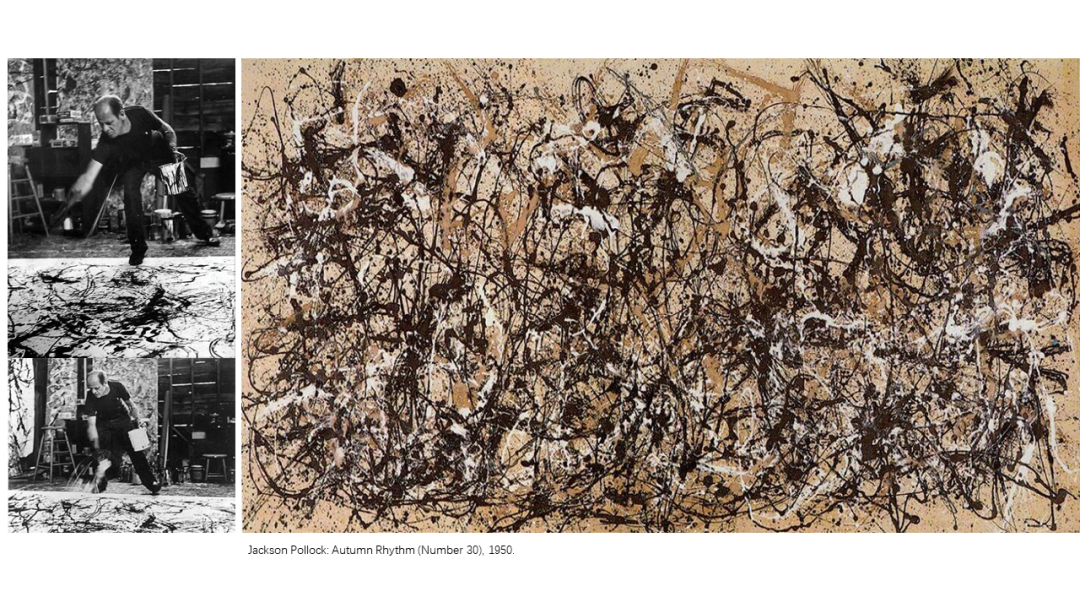
Jackson Pollock’s Autumn Rhythm (Number 30), 1950
Case Study 7: Robert Rauschenberg’s Assemblage
Besides assembling pre-existing materials and readily available products together to break through the two-dimensional boundary, Robert Rauschenberg’s Assemblage arts see these three-dimensional compositions as media that can be painted upon.

Canyon, 1959
Robert Rauschenberg
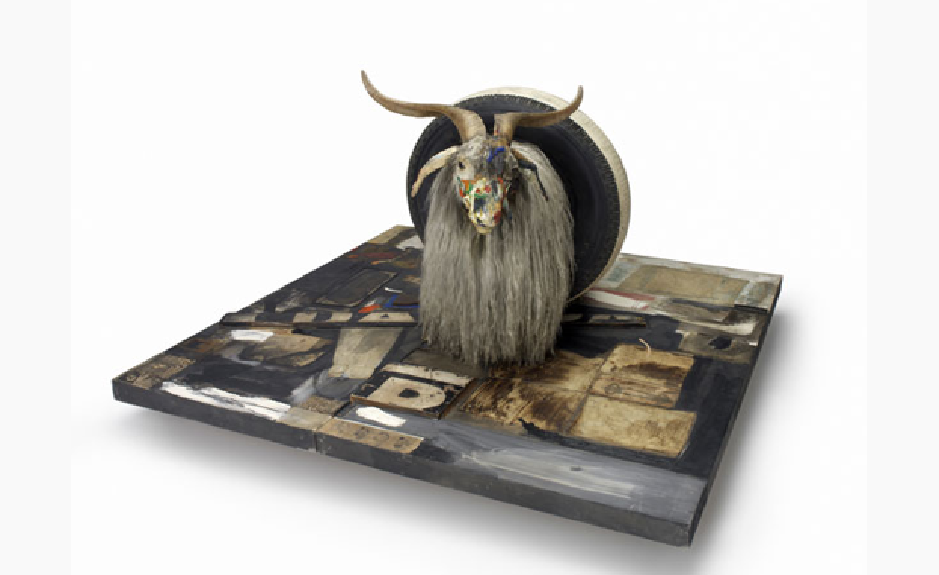
Monogram (1955-59)
Robert Rauschenberg
Case Study 8: Allan Kaprow’s 18 Happenings in 6 Parts, 1959

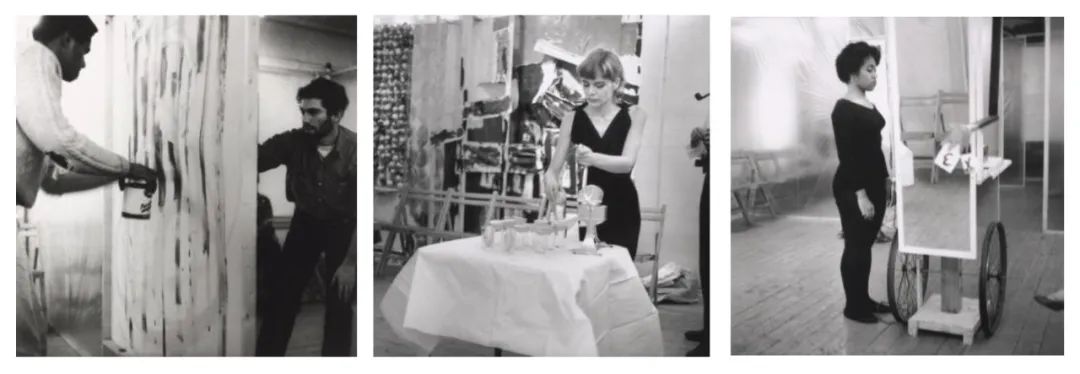

Case Study 9: Raphael Montañez Ortiz’s videos, performances and comprehensive media paintings

American artist Raphael Montañez Ortiz
Videotapes
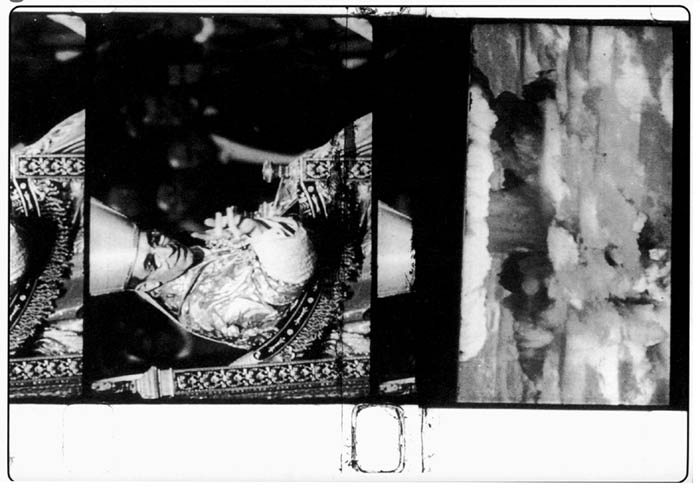
American artist Raphael Montañez Ortiz
Videotapes
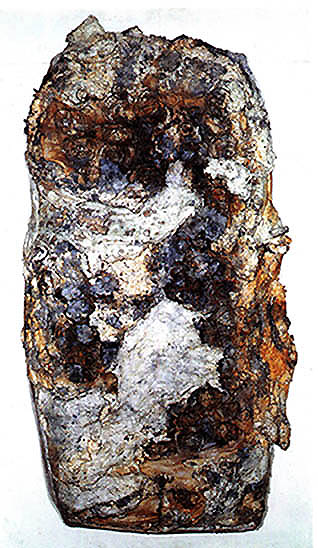
Raphael Montanez Ortiz
Archeological Find #3, 1961
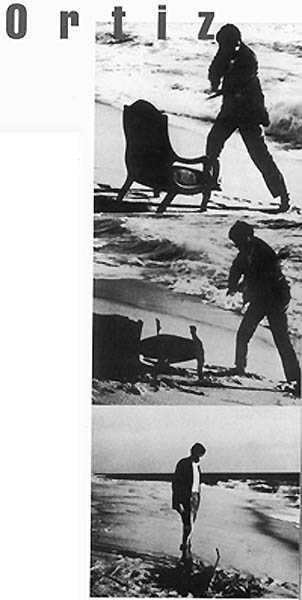
Raphael Montanez Ortiz
Chair Destruction, 1965
2“Intermedia”
In the 60s, the comprehensiveness in art is already a clear term. The core question was how to display the comprehensiveness as well as how to understand these newly emerged art forms. Dick Higgins was the first user of the word “intermedia” to describe all sorts of interdisciplinary artistic behavior. He aimed “to look for the connection between various forms and categories of arts”. “Intermedia” is not a certain form of art, but rather a standpoint, methodology, or notion. It is a notion of long history; for western art however, the rise of intermedium corresponds to postmodernism with a background of Pop art trending. As a result, its “Gesamtkunstwerk goal” shifted to the coalescing of art and life. Postmodern art theory rejects the concept of “finished” and “complete”, believing that all arts should be unfinished and being seen as in intergradation or undefined limbo. This is exactly the core value of “intermedia”.
Dick Higgins: “Much of the best work being produced today seems to fall between media…The ready-made or found object, in a sense an intermedium since it was not intended to conform to the pure medium, usually suggests this…and therefore suggests a location in the field between the general area of art media and those of life media.” (Higgins: Horizons, S.18.20)
“Intermedia is a connotation that waver between media, not to confused with mixed medium where multiple media were shown simultaneously. It often appears in the chain of thoughts of a performance art or theory.” Morgan: Commentaries, S.3)
Case Study 10: Mail Art from American Artist David Cole
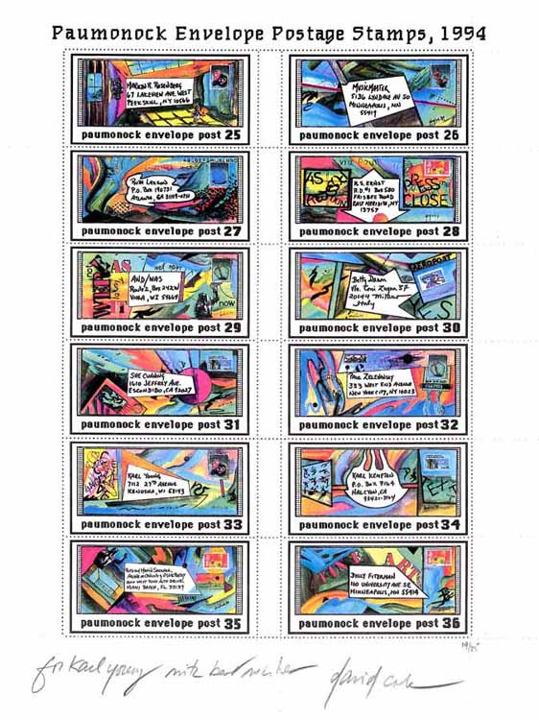
PAUMONOCK ENVELOPE POSTAGE STAMPS
1994 ,by David Cole
Case Study 11: German artist John Alsace’s image-text illustrations
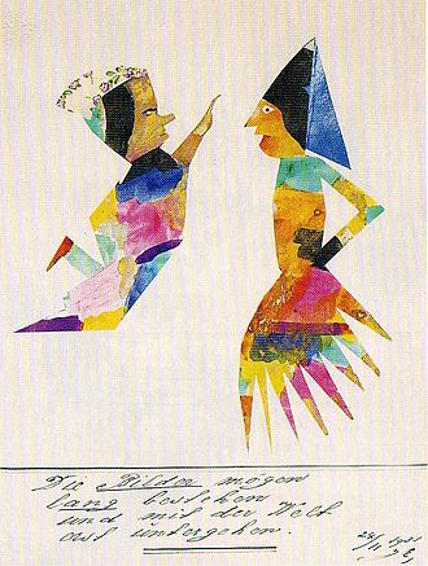
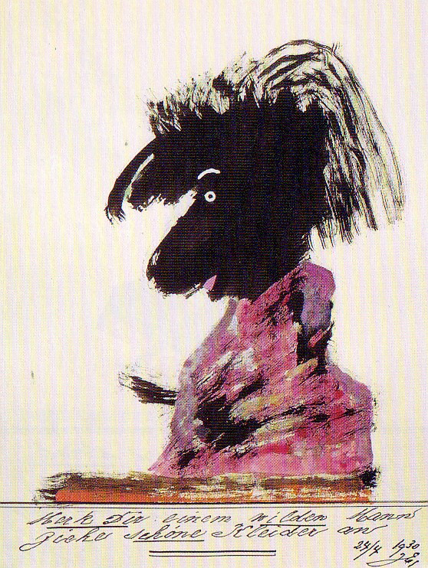
Case Study 12: Chinese Literati paintings, Jin Hui Dui and Japanese Haiga
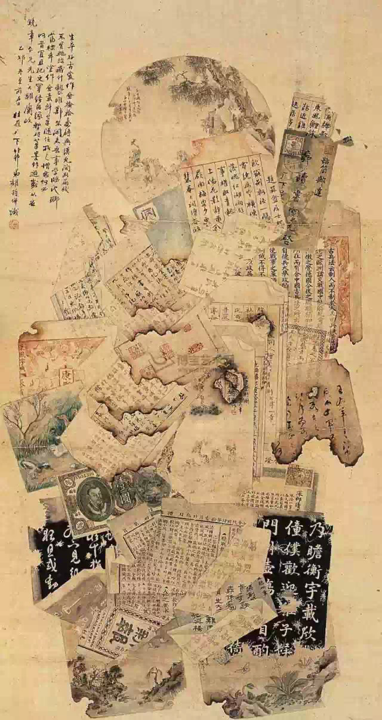

Jin Hui Dui (“Eight Broken” paintings)

Japanese Haiga
3 Conclusion
The content of this lecture is part of Professor Zheng’s comprehensive painting theories. The speech rotates around the keywords of “Gesamtkunstwerk” and “Intermedia”. Apart from the core concepts, Professor Zheng provided ample examples of renowned artworks in history as a reinforcement to the definition of comprehensive painting. He also explained the early history of comprehensive painting as well as the cause of its birth, interpreting their connection to the nowadays comprehensive painting as a subject.
Looking at the association between of “Gesamtkunstwerk” and “Intermedia”, one could confidently state that all forms of art originated from painting, music and poetry, with painting being the foundation. As artists spare no effort to break the restriction of media, new forms of art emerge. Among these neoteric, intermedia art formats -namely collage, action painting, performance art, conceptualism and new media art, exists comprehensive painting. The intrinsic idea of “comprehensive painting” is its conceptual quality, while it is an intermedium as well. Comprehensive painting, by definition, utilizes the modality of art to introspect the relationship between media.

Lecture footage, Oct. 16th, 2020
About the Keynote Speaker
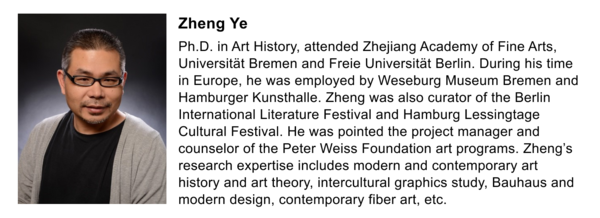
Zeng XiaoJie / Writer
Zheng Ye / Translator
Zheng Ye / Reviewer
Ma Jing / Editor






